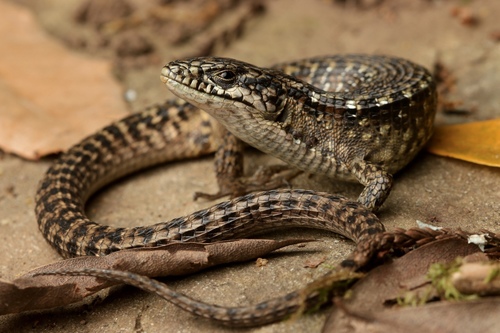
Northern Alligator Lizard
The Northern Alligator Lizard, Elgaria coerulea, captivates with its rough, scaled skin and agile movements. This forest dweller excels in tail regeneration and plays a vital role in controlling insect populations, showcasing nature's artistry in adaptation and survival.
10 years
Lifespan
28.3495 g
Weight
Length: 8 - 10 cm
Size
Brown, Grey, Black
Color
18 months
Age of Sexual Maturity
Least Concern
Conservation Status
Stable
Population Trend
Characteristics
Elgaria coerulea, commonly known as the Northern Alligator Lizard, is native to the Pacific Northwest of North America. This species thrives in moist, forested habitats and is known for its elongated body and rough, textured scales. It exhibits remarkable regenerative abilities, particularly in its tail, and is often found basking in sunlight or hiding under logs.
Distribution Range of the Northern Alligator Lizard
Elgaria coerulea, commonly known as the Northern Alligator Lizard, is native to the western regions of North America. Its geographical distribution includes parts of the United States and Canada, specifically from British Columbia in Canada, extending south through Washington, Oregon, and into northern California in the United States.
Northern Alligator Lizard's Habitat
Environmental Conditions
The Northern Alligator Lizard typically inhabits moist environments, often found in forests, woodlands, and grasslands. It prefers areas with abundant cover such as rocks, logs, and dense vegetation. The climate in its native habitat varies from temperate to cool, with seasonal variations in temperature and precipitation.
Ecological Niche
Elgaria coerulea occupies a niche as both a predator and prey within its ecosystem. It primarily feeds on small invertebrates such as insects and spiders. The species is well-adapted to its environment with a flattened body that aids in navigating through crevices and under debris, providing both shelter and hunting grounds. Its presence is indicative of a healthy ecosystem with adequate cover and food resources.
Copyright @ Nature Style Limited. All Rights Reserved.
 English
English